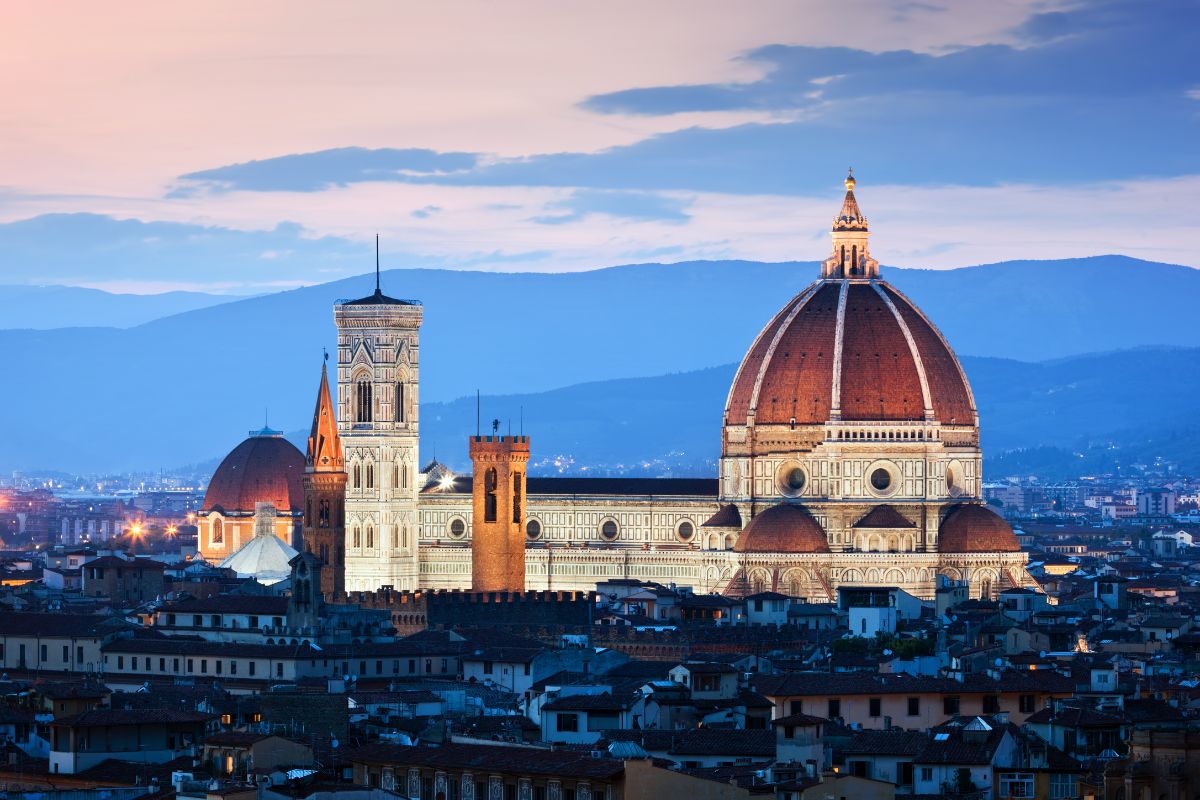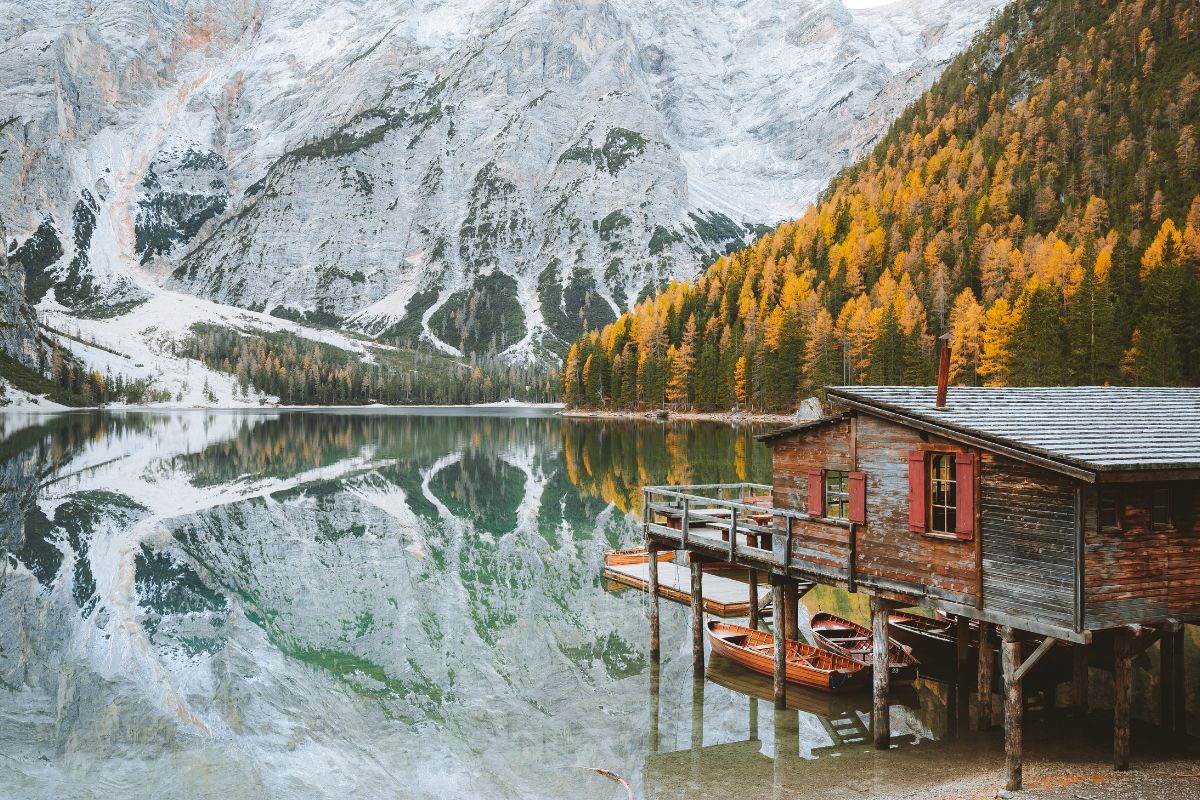This blog will help you choose the best time to visit Europe. It covers each season, telling you about the weather, daylight hours, and where to go. We suggest places to see and things to do in different countries. You’ll also find tips on what to pack for each season. Use this guide to plan your trip to Europe based on when you want to go and what you want to see.

What is the best time to visit Europe
1. Best time to visit Europe by seasons
Spring
When traveling around Europe, the best months are those in spring particularly from mid-April to early June. The weather in Europe is just right during these months, neither too hot nor too cold, with temperatures ranging around 12-21°C (54-70°F).
Ideal destinations:
- Paris: Eiffel Tower, Louvre Museum
- Amsterdam: Anne Frank House, Van Gogh Museum
- Provence: Lavender fields, historic villages
- Lisbon: Belém Tower, São Jorge Castle

Summer
This is the ideal period to travel to if you are looking for that midsummer experience in Europe. There are long sunny days-14 to 16 hours of daylight; temperatures are between 20-30°C.
Prime locations:
- Santorini, Greece: Oia sunset views, black sand beaches
- Mykonos, Greece: Little Venice, windmills
- Barcelona, Spain: Sagrada Família, Park Güell
- Amalfi Coast, Italy: Positano, boat tours

Fall
We would suggest starting to travel to Europe in the second half of September till the end of October as the fall season in Europe as this time is quite pleasing to the tourists in early fall. with visitors staying comfortably at temperatures that range in between 10-20°C.
The weather in fall is a little cooler and the days are shorter, but by the end of October, there will only be 10-12 hours of daylight but the weather remains good for touring the city.
Recommended visits:
-
- Tuscany, Italy: Vineyard tours, medieval towns
- Bordeaux, France: Wine tasting, Cité du Vin museum
- Munich, Germany: Oktoberfest (late September – early October)
- Prague, Czech Republic: Old Town Square

Winter
The winter season in Europe is much quieter and more peaceful. The temperature fluctuates between -5°C and 7°C, there are also shorter days of 7-9 hours of daylight.
Optimal destinations:
- Switzerland: Zermatt for skiing, Jungfraujoch
- Austria: Vienna’s Christmas markets, Schönbrunn Palace
- Norway: Northern Lights
- Finland: Lapland for Santa Claus Village, husky sledding

2. Best time to visit Europe by destinations
Different regions in Europe offer their beauty depending on the season. Below is a breakdown of the best times to visit various regions in Europe, considering the ideal seasons, typical weather conditions, and recommended activities:
| Region | Countries/Examples | Best Time to Visit | Weather | Activities |
| Northern Europe | Scandinavia (Norway, Sweden, Finland) | – June to August | Mild to cool weather, long daylight hours in summer | Hiking, nature exploration, city tours in mild weather |
| Southern Europe | Italy, Spain, Greece | – March to May – September to November |
Warm in summer, quite mild in spring and fall | Beach vacations, historical sightseeing, outdoor dining |
| Eastern Europe | Prague, Budapest | – March to May – September to November |
Cool to mild in spring and fall, warm in summer | Cultural sightseeing, historical tours, wine festivals |
| Western Europe | France, UK | – March to May – June to August |
Quite mild in spring and fall, warm in summer | Cultural exploration, museum tours, summer festivals |
What to pack for Europe
1. Essential items
- Passport and travel documents:
Always have your passport and visa (if needed), and keep digital and physical copies in case of loss. These are mandatory for crossing borders and hotel check-ins. Ensure that it is valid for at least six months beyond your planned departure date, as many European countries require this for entry

- Power adapter (EU and UK plugs):
Europe has different power outlets, with most using Type C (EU) and Type G (UK). A universal adapter is also recommended.
- Comfortable walking shoes and comfy clothes:
This means that if you want to be able to walk comfortably in Europe, you have to wear comfy clothes and shoes.
Reusable water bottles: This will cut down costs as well as the use of plastics because the water is safe for drinking from the tap in most European countries.
- An eSIM:
The Europe eSIM is a good option to stay connected for Europe travelers. It is important for navigation and communication, and more affordable than international roaming. To buy an eSIM, consider europe-esim.com for flexible and affordable plans. They provide diverse eSIM plans for any traveling goals.
Check our guide to get more useful tips: Find Europe eSIM with Phone Number: Full Guide for visitors
2. Packing for specific activities
When packing for Europe, your activities will dictate what essentials to bring, here are some recommendations:
- Outdoor Adventures: Hiking boots, moisture-wicking clothing, weatherproof jacket, daypack, sunscreen, insect repellent
- Beach Destinations: Swimwear, flip-flops, sunscreen, sunglasses, light cover-up, quick-dry towel, beach bag
- Festivals and Nightlife: Dressier outfit, stylish but comfortable shoes, compact bag, jacket for cool nights
- Winter Sports (Skiing): Thermal layers, waterproof jacket, ski pants, gloves, helmet, insulated boots
- Cultural/Religious Visits: Modest clothing (cover shoulders, knees), scarf, comfortable shoes
- Countryside Getaways: Layered clothing, walking shoes, picnic blanket, camera, snacks, book
Final thoughts
In general, Europe is a nice place to travel to, as every season is unique in its way. With this guide, we believe that now you know where to go and what to catch in spring, summer, autumn, and winter. Always make sure you have packed some items and be ready for your European trip!